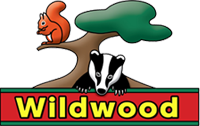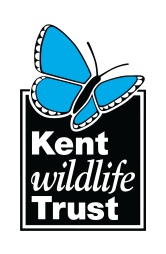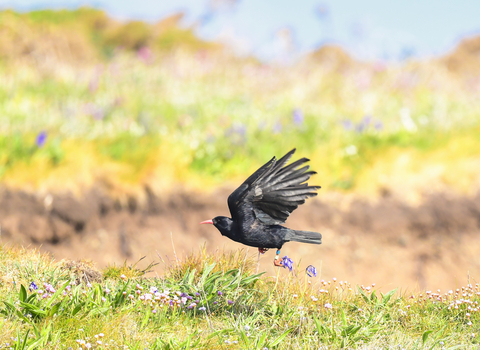Click below for relevant materials
Background information
The teams at Kent Wildlife Trust and Wildwood Trust have been working hard to prepare for the reintroduction of choughs to Kent. These charismatic birds have been missing from Kent's wildlife for over 200 years due to habitat loss and historical persecution. Now, they are finally returning.
This year, due to extensive conservation efforts by an incredible coalition of wildlife organisations, these birds are emerging from our history books and legends.
Key milestones so far
- Thousands of people visited an aviary of choughs that we hosted with English Heritage last summer at Dover Castle.
- Our fundraising appeal for the chough reintroduction raised an incredible combined total of £105,284.65, making this project possible.
Choughs: a conservation success story
The reintroduction of choughs is possible because of four decades of conservation work. Kent Wildlife Trust worked with many other organisations, including the National Trust and the White Cliffs Countryside Partnership, to restore chalk grassland habitat and conservation grazing management across the county. Extensive feasibility studies have shown that, thanks to this dedicated restoration work, there is now enough suitable habitat to support the return of wild red-billed choughs to Kent.
A key priority for the Chough Project is to maintain and create more chalk grassland. With the chough as our flagship species for chalk grassland in Dover, we are supporting other landowners to adopt naturalistic grazing, using animals whose behaviour mimics that of large herbivores that were once wild in the landscape. Our grazing species include ponies, sheep, and cattle, as well as pigs that root in the ground.
Why is grazing key?
Choughs use their long, curved beaks to feed on insects found in soils and animal dung. Unfortunately, the routine use of worming treatments in grazing animals has led to a massive drop in soil larval biomass.
Grazing livestock at low densities on chalk grasslands can increase soil organic matter and carbon storage, as well as improve water retention, soil structure, and reduce soil compaction - all of which help to mitigate the impacts of the climate emergency.
Prior to the reintroduction, we have undertaken significant habitat feasibility studies which show we have sufficient areas for these birds to feed. Despite this, we still need to undertake additional actions to ensure their return is successful and permanent.
How will we ensure the choughs' successful return?
- A successful reintroduction project needs to establish a viable breeding population, which can take several years. Chough are bred in captivity by Paradise Park, Cornwall, and Wildwood Trust which provides birds for release as well as a safety net that can add birds into the population as needed. We will be releasing small family-sized cohorts of 6-12 birds each year for a minimum of five years in order to establish a breeding population. The Kent reintroduction has provided momentum for chough restoration across southern England and we are working together with multiple organisations to re-establish chough across its historical range.
- The use of roost and nest boxes and supplemental feeding will support choughs while they learn where to find food and natural roost and nest sites.
- The improvement of soil health, through closely managed grazing, will make the soil more resilient to the impacts of drought, minimising impacts to choughs.
- The close monitoring of choughs, including nest site selection and feeding preferences, will help inform our understanding of choughs and the broader habitat they rely on.
The return of choughs will:
- demonstrate the incredible potential of conservation work to return missing species, paving the way for further habitat restoration across our county
- encourage farmers and landowners to reduce the use of worming and other treatments in livestock, thereby benefitting the whole ecosystem
- engage communities in conservation due to their cultural and historical significance to Kent.
Staff Info

Paul Hadaway, Director of Conservation, Kent Wildlife Trust
As Director of Conservation, Paul develops and implements conservation and green space policies and drives nature-based solutions across Kent.
"My journey with choughs started 40-something years ago, spending summers with my grandparents on Anglesey, sitting on the cliffs at South Stack and being captivated by the sight and sound of these incredible birds.
Track forward 20 years and I found myself working on chalk grassland projects along the Kent coast, restoring habitat and reintroducing grazing. This conservation work - in partnership with the National Trust and White Cliffs Countryside Partnership - is what is enabling choughs to return to this coast. This project is an amazing success story and one that traces a very personal line for me."

Liz Corry, Chough Release Supervisor, Wildwood Trust
Liz joined Wildwood in May 2022 to take up the new position of Chough Release Supervisor having previously had an advisory role since 2016.
Liz had been the chough project manager for Durrell Wildlife Conservation Trust seeing it through from its inception to reintroduction, and the successful establishment of breeding pairs in the wild. Over her 18 years with Durrell, Liz worked and supervised on several overseas field projects focusing on endangered species conservation, monitoring and research, and captive breeding for release.
Suzanne Kynaston, Conservation Officer, Wildwood Trust
Over a 22-year period, Suzanne has undertaken a number of wildlife roles throughout her career at the Wildwood Trust, ranging from Outreach Officer with the Education department, to her current role as Conservation Officer. As part of her conservation role, Suzanne runs annual courses on small mammal trapping and identification and dormouse handling. She is responsible for the national studbook for the hazel dormouse and assists with co-ordinating the captive breeding and reintroduction programme for this species. In addition, she is co-lead on the south east pine marten restoration project.
Her role in the chough project is to assist Laura with project management as well as co-ordinating the project volunteers.
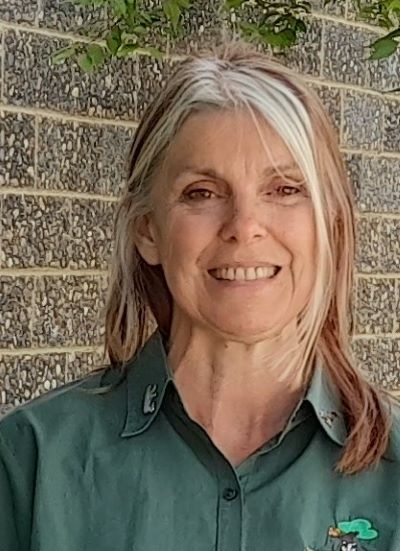
Wildwood Trust, Director of Conservation, Laura Gardner
Laura Gardner, Director of Conservation and Rewilding, Wildwood Trust
Laura has worked at Wildwood since 2018 and has been developing and leading on the Kentish chough reintroduction project with Kirsty Swinnerton at Kent Wildlife Trust. Laura oversees the chough captive-breeding programme at Wildwood and coordinates with Paradise Park, Cornwall, to provide birds for release.
Laura has worked in the field of conservation for over 30 years specialising on the conservation breeding and population management of bird species both in zoos and in the wild. Prior to moving to Wildwood, Laura was Curator of Birds at ZSL and before that was Curator of Birds at the Leeds Castle Bird Garden in Kent.
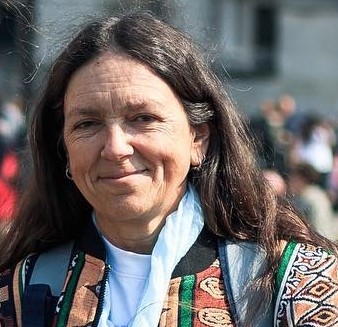
Kirsty Swinnerton, Wilding Ecologist, Kent Wildlife Trust
"Until I joined KWT, my career was international, and I’ve worked on the recovery of some of the most endangered species in the world. Using captive-breeding and reintroduction, and conducting research to evidence the restoration success, I’ve helped to bring several species back from the brink of extinction. I joined KWT in 2019 and my focus is also on the reintroduction of species missing or threatened in Kent, including the Chough.
My work has mostly focused on evaluating the feasibility of Chough reintroduction to Kent, and the actions needed to ensure that it is successful. I manage the legal compliance needs, develop relationships and partnerships with conservation groups, local agencies, and specialist advisors to support and implement the project, and I am designing the longer-term research programme to help us evidence the success of the reintroduction."

Elysia B. Davies, Wilder Engagement Manager, Kent Wildlife Trust
Having graduated with a MSc from the University of Kent in Conservation Science in 2020, Elysia now works across the different Wilding projects at Kent Wildlife Trust. As Engagement Manager she works to ensure that the people and communities of Kent are included in and benefit from KWT’s Wilding projects, including managing the Engagement Programme within the Chough Reintroduction. She also leads KWT’s project management approach using the Open Standards for the Practice of Conservation, that supports teams to effectively plan, deliver, and adapt their projects, maximising the impact of our work for wildlife and communities in Kent.
FAQs
What are/why choughs?
The red-billed chough is a rare member of the crow family with glossy black plumage, red legs and a bright red beak. The chough was once native to Kent but became extinct here more than 200 years ago due to intensive farming practices and persecution.
The return of choughs will:
- demonstrate the incredible potential of conservation work to return missing species, paving the way for further habitat restoration across our county
- encourage farmers and landowners to reduce the use of worming and other treatments in livestock, thereby benefitting the whole ecosystem
- engage communities in conservation due to their cultural and historical significance to Kent
What they eat/habitat
Choughs are specialist soil and dung invertebrate feeders. In other words, they eat insects.
Choughs favour short chalk grassland - a habitat which has declined significantly due to intensive farming resulting in the extinction of wild choughs in Kent.
For four decades, Kent Wildlife Trust has worked alongside others, including the National Trust and White Cliffs Countryside Partnership, to restore chalk grassland habitat and reintroduce conservation grazing management across East Kent. Extensive feasibility studies have shown that, thanks to this dedicated restoration work, there is now enough suitable habitat to support the return of wild red-billed choughs to Kent - and we couldn't be more delighted to welcome them back.
What is conservation grazing?
Large herbivores once roamed our landscapes. Their grazing behaviours maintain key habitats (such as grassland and heathland) by controlling the spread of certain plant species and allowing many others to thrive.
In order to mimic this ancient activity, we have introduced grazing animals, such as sheep, cattle and ponies, as well as pigs, to many of our reserves. Their grazing behaviours help to naturally and effectively restore and maintain biodiversity. Grazing animals also provide another service: their dung is home to a variety of invertebrates, all of which are eaten by choughs.
Competition from other birds
Chough used to be part of this landscape and evolved to coexist with other species such as ravens and peregrines. Although they may compete for some resources such as nest sites, we will monitor this and provide additional nesting opportunities if required.
As a specialist soil and dung invertebrate feeder, choughs are unlikely to outcompete any other species. There are no other species sharing the short grassland habitat which rely solely on soil and dung invertebrates.
Cultural links
Many will know the story of the murder of Thomas Becket. The year 2020 marked 850 years since his dramatic murder, but you may be less familiar with a mythical connection to the chough.
It is rumoured that as Thomas Becket lay dying, a crow flew down, paddled in his blood and acquired a startling red beak and feet, transforming into a chough.
Sometime after his death, Thomas was attributed a coat of arms featuring three choughs, which first appeared about 100 years later in Canterbury Cathedral, and, in the 14th century, the City of Canterbury adopted a coat of arms with three choughs and a royal lion.
The choughs’ connection to Dover was also immortalised by William Shakespeare who wrote of these charismatic birds in ‘King Lear’. He describes ‘the Crowes and Choughes that wing the midway ayre’, at what became known as ‘Shakespeare Cliff’
Future plans
The project partnership will be releasing small family-sized cohorts of between 6-12 birds each year for a minimum of five years in order to establish a breeding population of 50 birds.
